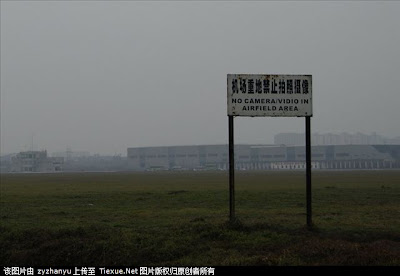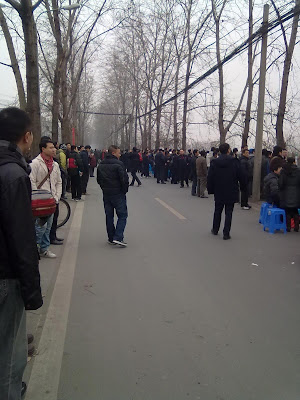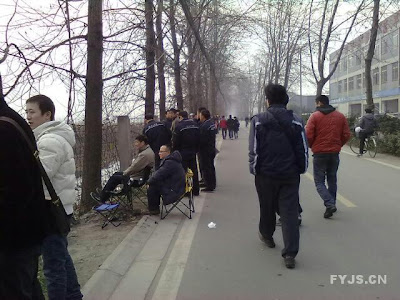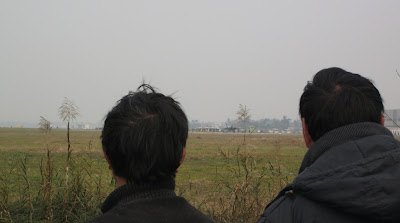What China's Stealth Fighter Means
Jan 7, 2011
By David Fulghum, Bill Sweetman, Robert Wall
Washington, Washington, London
With the surprise rollout and high-speed taxi tests of China’s newest J-20 fighter, a stealth prototype, the U.S. Navy’s top intelligence official admits that the Pentagon has erred in its estimates of the speed with which Beijing is introducing new military technology.
The aircraft’s existence was not a surprise to the intelligence community, but “one of the things that is . . . true is that we have been pretty consistent in underestimating the delivery and initial operational capability of Chinese technology weapons systems,” says Vice Admiral David J. Dorsett, deputy chief of naval operations for information dominance and director of naval intelligence. Two recent examples of misanalyses have been the J-20 fighter and the DF-21D anti-ship ballistic missile (AW&ST Jan. 3, p. 18). Moreover, there is evidence that China’s advances include high-performance engines and missiles that display a new level of technical maturity and performance.
“In terms of the [J-20] stealth photos, it’s not clear to me when it’s going to become operational,” Dorsett says. “Do we need to refine our assessments better? I think so.”
Other Washington-based intelligence officials say they are watching the J-20’s testing with interest. “They have done several high-speed taxis with the nosewheel off the ground,” says another veteran analyst. “They could still be working out some kinks before they try an actual first flight.”
There also are a lot of unknowns about the aircraft’s real importance.
“Operational impact is a tough call to make at this point, given that this plane, even if it flies, is not going to be a full-up fifth-gen [aircraft],” the analyst says. “In essence, this is going to be a novelty for the next decade before it starts to roll off the series production lines and gets to the line units in any numbers that would impact any of our mission planning. A lot of things can happen, good and bad, between now and then to either speed this up or severely put the brakes on things.
“As far as radar cross section goes, this is not [a Lockheed Martin] F-22, nor should we be thinking that they are going for low RCS right out of the chute,” he says. “We have to keep in mind that this is the first attempt and it’s also the very first prototype of that first attempt. There’s a lot of tweaking . . . before they get to the final version. I see too many people . . . making sweeping assessments. That has always been a mistake.”
Engines have been an Achilles’ heel for Chinese high-performance aircraft. The Chinese have not produced an indigenous engine that has the performance they need for a world-class fighter. Under earlier military doctrine, which favored mass over advanced technology, the People’s Liberation Army Air Force was equipped with adapted versions of 1950s-era Soviet aircraft designs using old-technology engines. Analysts offer different assessments of China’s first high-performance engine, the Shenyang WS-10; but recent images of the J-11B fighter—China’s bootleg version of the Sukhoi Su-30—appear to show a nozzle design that differs visibly from the Russian AL-31F and resembles that of WS-10 engines displayed at air shows.
Dorsett downplays the immediate impact of the new fighter and new anti-ship missile.
“I’m more worried about Chinese game-changing capabilities in nonkinetic [areas such as information dominance, network invasion and electronic warfare],” he says. “I am most concerned about China’s focus on trying to develop [the ability] to dominate the electromagnetic spectrum, to counter space capabilities and to conduct cyberactivities.
“The other concern I have is China’s ability to become operationally efficient in a sophisticated, complex, joint war-fighting environment,” Dorsett says. “I don’t see China with those capabilities now. I do see them delivering individual components and weapon systems [such as the J-20 and DF-21D], but until they acquire proficiency [with them], how competent are they really going to be?” The Chinese military’s self-proclaimed timeline is mid-century, Dorsett notes. In that context, he denies that the Pentagon is overestimating its threat.
“I’m not alarmed,” Dorsett says. “I am intrigued by developments and am quite interested in the quantities and different types of technologies that we didn’t expect or overestimated.”
There is a marked relationship between China’s booming economy and its military buildup, he points out. But there are equally obvious shortfalls.
“The Chinese don’t have a great integrated ISR capability or an anti-submarine capability at all,” Dorsett says. “They don’t demonstrate a sophisticated level in joint warfighting. They are at the early stages of operational proficiency across the board. What would be dangerous is underestimating the timeline of synchronizing these various elements.”
Dorsett returned to the unexpected appearance of the J-20.
“How far along are they?” he asks. “I don’t know. They clearly have an initial prototype. Is it advanced and how many trials, tests and demos do they have to go through before it becomes operational? That’s not clear to me.”
However, the evidence of the design’s sophistication is mounting. The J-20 is supposed to carry new weaponry with some of it tucked away internally. China is continuing an effort to expand the military’s air-to-air missile inventory. Although Avic officials have not discussed what comes after the PL-12A radar-guided medium-range missile, new information suggests that work is progressing on several enhanced versions. These include a combined solid-motor, ramjet-powered PL-21. The missile, with a single inlet for the ramjet, may have undergone ground tests last year.
Work may be slightly more advanced on the PL-12D, a ramjet upgrade of the basic PL-12 with more modest changes to the airframe and less endgame maneuverability than the PL-21 would feature. *Chinese industry also appears to be working on the PL-12C with smaller aft control fins for internal carriage on the J-20. The mid-body fins are believed to be similar to the basic PL-12 and PL-12B with improved electronic counter-countermeasures.
The close-in battle would use the PL-10, whose design may resemble South Africa’s Denel A-Darter. China’s ability to increasingly use standoff weapons, also in air-to-ground and anti-ship missile roles, is already affecting planning among potential adversaries. Japanese military officials are *showing interest in missiles with greater ranges to be able to engage Chinese threats earlier, and there are discussions in the U.S. about the need for weapons with greater engagement *capability.
Dorsett also expanded on earlier remarks about the DF-21D missile by U.S. Navy officials.
unknowns] about how proficient they would need to be to fully deploy it at this point.”
Meanwhile, the Navy has changed its assessment of the DF-21’s ability to threaten a ship. Until now, the service has essentially rated as “poor” the possibility of China’s hitting an aircraft carrier with a ballistic missile.
“The technology that the Chinese have developed and are employing in the DF-21 system has increased their probability of hitting a maneuvering target with a salvo of several missiles,” Dorsett says. “What that probability is, we don’t know. I’m assessing that they don’t know. To our knowledge they haven’t test-fired this over water against a maneuvering target.”
That leaves Dorsett with the problem of improving intelligence-gathering to make the Pentagon’s predictions more reliable.
“One area we haven’t made much progress on was processing, exploiting and disseminating [data],” he says. “It’s high on our list for the upcoming year. We’re tackling imagery exploitation first. I think an awful lot can be automated. You don’t need to look at every piece of electro-optical imagery. You need tools that alert you to key issues.”





